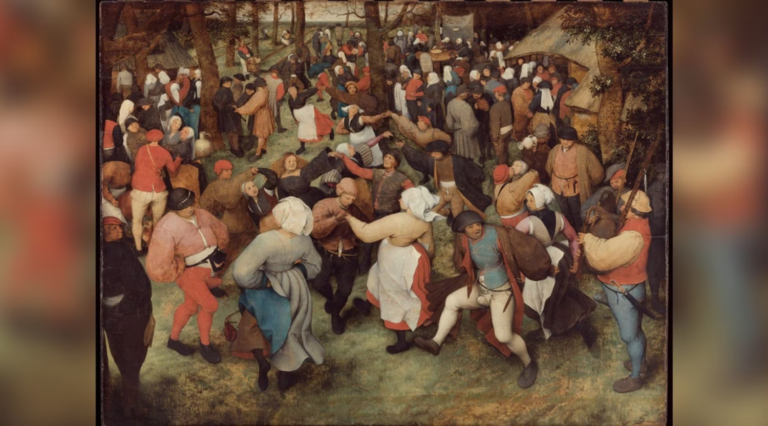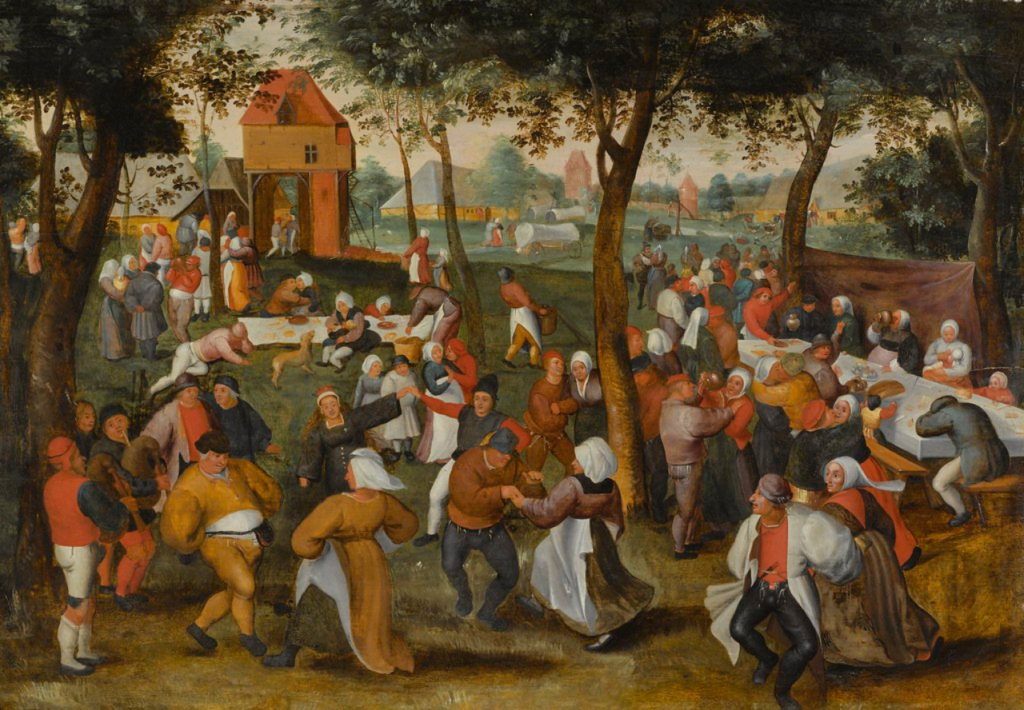
Mumbai-based artist Riyas Komu on what makes Pieter Bruegel The Elder’s painting ‘The Wedding Dance’ essential viewing
The Dutch artist Pieter Bruegel holds a special place among my favorite painters. During a period when religious themes dominated the art scene, Bruegel distinguished himself by creating expansive paintings that depicted the daily life of the rural working class. His works explored peasant festivities, children’s games, popular religion, and various aspects of rural existence. A notable piece in his collection is “Netherlandish Proverbs,” where he illustrated proverbs and sayings in his language, offering a unique insight into human flaws and pretensions. This approach heavily influenced some of my early paintings focusing on the working-class population in Bombay.
Bruegel initially gained recognition as a print-maker before transitioning to painting later in his life. The piece I am sharing, “The Wedding Dance,” dates back to 1566, just three years before his untimely death. This painting exemplifies Bruegel’s fascination with peasant life, standing almost four feet in height and five feet in breadth. Executed on a wood panel, the classic surface of its time, the painting features over 100 characters. As the title suggests, it captures a scene from a wedding celebration.

Despite the disdain from the elite towards the culture of peasant classes and dancing, Bruegel presents the dancers as vibrant and full of life. The bride, positioned at the center in black attire, actively participates in the dance. Men and women are shown engaged in various activities such as drinking, chatting, playing music, and laughing, creating a lively atmosphere. The simplicity of each character, depicted with red and black mixed with earthy tones, contributes to the basic yet fervent spirit of the scene. This is not a refined and elegant dance; instead, it portrays a wilder, more exuberant celebration not permissible in upper-class society.

Some critics argue that Bruegel’s portrayal might have carried a critical undertone towards peasant cultures and behaviors. However, this adds another layer of intrigue, as despite any critical stance, Bruegel dedicated considerable attention to observing and capturing the energy and enthusiasm of the working poor in his society. The cultural vitality evident in “The Wedding Dance” resonates with what I aim to convey in my own works—a celebration of the exuberance found within the lives of the working class.
Riyas Komu, recognized for his commentary on socio-economic and political realities, explores contemporary paradoxes through various mediums. His works have gained international exposure, including participation in the prestigious Venice Biennale.